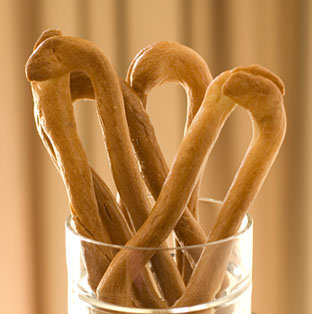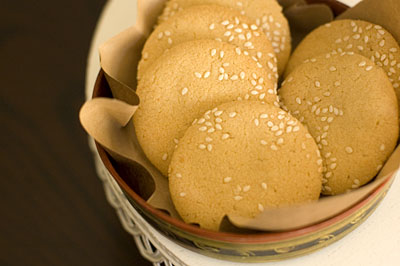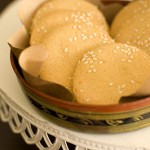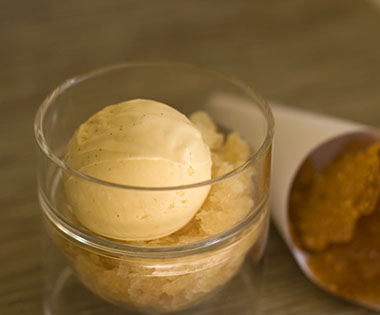Fennel Taralli
For this week’s WHB, hosted by Gay of A Scientist in the Kitchen, I am baking with the seeds from a lovely herb, fennel. I love the fennel bulb for it’s sweet, aniseed-y flavour, and it’s crispness when shaved finely into salads. Their seeds (the dried fruit of the plant) are as strongly flavoured and have many uses in the cuisines of various cultures.
Ground fennel seeds are an essential ingredient in Chinese Five Spice powder; the “wonder powder” of Chinese cooking. I have also seen a sweet version of these seeds sold in Indian grocery stores. Each seed is individually coated in a colourful sugar shell and these are generally eaten after a meal to sweeten the mouth, freshen the breath and aid digestion (by helping to expel gas!).
It is also a commonly used ingredient in Italian cooking, and are what make these Fennel Taralli so special. The recipe, which features in Maggie Glezer’s Artisan Baking book, comes from a bakery in Brooklyn, New York, run by two Italian Bakers. These rubberband-shaped breadsticks emerge from the oven, aromatic and glossy. They are meant to keep ‘indefinitely’, but I can’t really vouch for that because they didn’t last more than a couple of days in our house!
Fennel Taralli :
(from Artisan Baking, by Maggie Glezer)
1/2 teaspoon active dry yeast
250g water, at about 43’C
450g plain flour
120g durum flour
1 3/4 teaspoon salt
40g vegetable oil
60g white wine
10g fennel seeds
2 tablespoons olive oil
In a small pitcher, sprinkle the yeast over the warm water, stir, and let stand for 5 to 10 minutes.
Combine the plain flour, durum flour, and salt in a large bowl. Add the vegetable oil, white wine, and yeasted water. Mix the dough together, then knead this incredibly stiff dough until it smooths out a little. Knead in the fennel seeds.
Immediately after mixing, cut the dough into 32 pieces, each weighing about 30g. Place a cup of water next to you to help you roll. Dampen your hands with just a few drops of water and roll a piece of dough into a rope about the thickness of a pen. It should be about 11 inches long. Pinch the ends together hard. Hold the rope ring together at the seal and let it drop into an elongated oval shape. Place it on a tray or on your work surface. The seal should be at the top curve. Continue to roll and shape the rest of the taralli.
Cover the taralli with plastic wrap and let them rest for 2 hours. They will not appear to rise at all.
Arrange 2 racks on the oven’s center shelves and clear away all racks above the ones being used. Preheat the oven to 205’C.
Fill a wide pot 3/4 full of water, bring it to a boil, and then lower the heat so that the water simmers. Add the olive oil to the simmering water. Set a cooling rack over a baking sheet and place it near the water. Line 2 large baking sheets with baking paper.
Boil the taralli in batches small enough to fit comfortably in the pot. They will sink at first then quickly float. (If they do not float, let them continue to rest for another hour, then boil them.) After they float and puff up a bit, after about a minute of boiling, skim them from the pot and let them drain on the cooling rack. Boil the remaining taralli. After each batch has drained, move them to the paper-lined baking sheets.
When you have finished boiling the taralli, bake them until they are golden brown and very dry, about 45 minutes, rotating the baking sheets halfway into the bake. Let them cool on a rack and store them in a sealed container.











